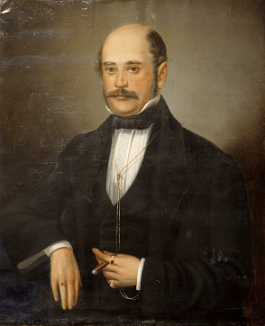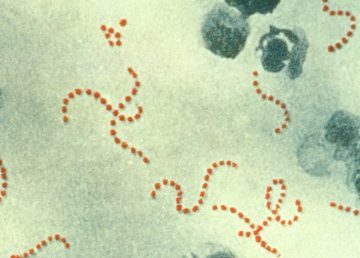by Godfrey Onime

At the hospital a couple of years ago, a nurse walked up to me to report that one of my patients was “hysterical.”
“She says to make sure Dr. X never returns to her room,” the nurse explained. I was the patient’s internist and Dr. X the surgeon who had operated on her. Apparently, the surgeon had not washed his hands — before and after touching the dressing on her wound.
I braced myself as I went to see the patient in hopes of placating her. I knew it can be difficult persuading another surgeon to take over the case of a patient they had not operated on, as they may think such patient was a troublemaker.
The patient was laying in bed and talking angrily on the phone. I had seen her the previous day, before her surgery, but not yet on that morning. In her early 70s, she looked younger and fit. I introduced myself again, more out of habit than her not remembering who I was. I asked what the matter was, and she recounted essentially what the nurse had said.
“I kept watching him and flinching as he examined me and then lifted the bloody dressing on my wound to take a look. I wanted so bad to say something, but I was afraid he might get mad and do something crazy to me, like purposely infecting my wound. Now that I think about it, I should have told him right to his face.”
Wanting to give the surgeon the benefit of the doubt, I reasoned, “Could he have used the disinfectant hand-rub solution outside the room?”
“Not a chance,” she snapped. “I saw him in clinic twice before he scheduled the surgery, and I don’t remember him washing his hands once, or using the disinfectant solution right there in the room. That’s when I should have looked for a different surgeon.” She paused for a minute, sucking in air in an apparent effort to calm herself down. “And even if he did use the disinfectant this time, we are dealing here with wounds that can have blood and pus. I don’t think a disinfectant would dislodge all that mess.”
I conceded that she had a point there.
“I don’t want that man near me ever again,” she added in a note of finality, and I knew that was that.
The issue of doctors and other health professional failing to wash their hands between patients is a longstanding one in healthcare. For much of the history of medicine, up until the 19th century, little or nothing was known about infectious agents as a cause of illness, less that they can hitch a ride from one person to another through the hands of their caregivers or unsterilized equipment. Illness was thought to arise from an imbalance caused by bad air or evil spirits.
Then, entered Ignaz Semmelweis in the mid-1800s. By this time, doctors were beginning to be expected to have scientific training and thinking. A brilliant physician, he obtained a position at the renowned Vienna General Hospital as a young man in his 20s. As professor Howard Markel, of the Center for the History of Medicine at the University of Michigan, explained, Semmelweis however had two strikes against him: He was Hungarian and Jewish. Hence he was banished to running the bowels of what at the time was the less desirable unit of obstetrics.

Semmelweis charged to work, collecting data and determined to make the place safer. The university had two different maternity wards. One was run by the midwives who were all women and the other by the doctors and medical students who were during that period all men. At the time, the so-called “childbed,” or puerperal, fever was a common cause of death among women after childbirth. Semmelweis noted that many more patients died in the doctors and medical students wards than the midwives’, usually from puerperal fever. And what a horrible death that was: raging fevers, screams of agonizing pain, puss from the private parts, and on autopsy after death, abscesses all over the uterus and pelvis, abdomen, and chest. Death commonly occurred within a few days after the women delivered.
But what was the cause of the huge difference in afflictions and mortality between the two wards? At first Semmelweis noticed that the patients of the midwives gave birth laying on their sides, so he instructed the doctors to do the same of their patients; it made no difference. Then he noted that after the patients at the doctors’ wards gave birth, a priest came around and an attendant would ring a bell. Semmelweis reasoned that the sound may have startled the new mothers into developing puerperal fevers, so he made the bell-ringing vanish. Still no difference; the patients of the doctors continued to succumb to agonizing deaths en masse. Many women about to deliver begged to be transferred to the midwives’ section, to which Semmelweis usually acquiesced. Frustrated about his lack of insight into the problem, Semmelweis took a break from work and traveled to Venice, hoping the rest and some art would rejuvenate him.
On his return, the obstetrician was devastated to learn that his good friend, a pathologist, had died of what seemed eerily the symptoms of childbed fever. More telling, he had nicked his finger while performing an autopsy on a woman who had died of puerperal fever, before soon taking ill himself.
Eureka! A light bulb burst on inside of Semmelweis’s head. He deduced that what the midwives and doctors did differently was that the physicians and students started their busy day performing autopsies with bare hands on the patients who had died the day before. They then afterwards rushed to the task of delivering their pregnant patients–of course without first washing their hands. Semmelweis reasoned that the men transferred tiny pieces of corpse, or “morbid poisons” from the sickened and dead patients to their birthing mothers. He ordered the doctors and students to wash and scrub their hands with water and chlorine after autopsies and between patients. Almost immediately, the rate of puerperal fevers plummeted in the doctors’ wards to the level of the midwives’ — from about 20 in every 100 women, down to just one in 100.
Semmelweis got even busier. He became the hand-washing police, recommending that all health providers observed hand hygiene between patients. You would think the doctors would be happy to comply. Not quite. Instead, they resented the suggestion that they were the ones causing harm to their patients. It did not help that Semmelweis was a tactless, difficult, and angry man who lacked people-skills. For one, years after his research, he refused to publish his findings and reasoning, because he considered it ”self-evident.” Further, he openly berated even the most powerful doctors who dared to challenge him or failed to wash their hands. He would shortly lose his position at the prestigious university, and the death-rate from puerperal fever would, for years, continue to rage.
Medical historians also cite another reason for the failure of Semmelweis landmark discovery to gain traction: he was before his time. He made his findings in 1847, when doctors scoffed at anything that smacked of the suggestion that tiny invisible agents were capable of hijacking the body and wrecking untold havoc. Louis Pasteur will advance the germ theory of disease more than a decade after Semmelweis findings, between 1860 and 1865. But much of the credit for practicing antiseptics in medicine goes to the Scottish surgeon Joseph Lister, who a few years after Pasteur and 20 full years after Semmelweis, published his finding in a series of papers in Lancet, in 1867. Lister not only recommended hand washing, but dousing wounds with carbolic acid to stave off infections. Of course, Lister met with his own set of resistance from many doctors, as movingly recounted in the book, The Butchering Art, by medical historian Lindsey Fitzharris. Many more giants over the years have added to our understanding of microbes and their culpability in disease-causation, including very early on the German physician Robert Koch, who proved that a specific bacteria caused a specific disease (anthrax). And we now know that the “morbid poison” that caused puerperal fever and dispatched so many woman to early graves was the bacteria called Group A hemolytic streptococcus.

With so much now known about infectious agents and the benefits of hand-washing, do you think we today comply better? We do not. Study after study have shown that doctors and other health providers wash their hands less than half the time, including a systematic review that found that only one-third of doctors washed their hands. The nurses did better, but still only 48-percent of the time.
Why this laxity with handwashing among those who should know better? Another study on the handwashing habits of 163 physicians, published in the Annals of Internal Medicine, found that internists and medical students were the most mindful about hand-washing. Anesthesiologists and surgeons were less diligent about washing their hands. Some factors that hindered hand-washing were days with busy workload and a feeling of not being watched.
A World Health Organization (WHO) report has also listed other barriers to adherence with hand-washing guidelines, including:
- Working in the ICU, surgical unit, or emergency rooms
- being a nursing assistant (rather than a nurse), or physical therapist
- Sinks are inconveniently located/shortage of sinks
- Lack of soap and paper towels
- Male sex
- Handwashing agents cause irritation and dryness
- Understaffing and overcrowding
- Wearing gloves and the belief that using gloves avoids the need for hand hygiene
- Not thinking about it/forgetfulness
- No role model from colleagues or superiors
- Skepticism regarding the value of hand hygiene
- Disagreement with the recommendations
And here is a comprehensive table of the full reasons for poor adherence to hand-hygiene.
In the meantime, the raging COVID-19 pandemic has revived handwashing among the tools for fighting the deadly scourge, in addition to the act slowing the spread of the others vexing infections that have in recent years plagued our hospitals and communities. But it is not just doctors, nurses, and other health-providers who fail to wash their hands — patients and the general public also fall short. Recently, researchers covertly monitored visitors to a university referral hospital that provided a sink for hand-washing before entering. Only about one-percent of the visitors did so. Yet, it is known that handwashing not only prevent transmitting bacterial illnesses, but also those caused by viruses. An analysis of over 20,000 person-years, outpatient visits by army recruits for respiratory illness revealed a 45% lower rate among those who washed their hands at least five times a day, compared with those not instructed to do so.
What to do when doctors or others persons fail to wash their hands? It is generally best to gently remind them. Berating or scolding them often leads to bruised ego and makes the person being corrected go on the defensive and resistant to change, just as it did with the colleagues of the 19th-century obstetrician, Dr. Semmelweis.
Another alternative to frequent hand-washing is the liberal use of hand-rub disinfectants. The Annals of Internal Medicine study on the attitudes of doctors towards handwashing also showed that if hand-rub disinfecting solutions were at the patient’s bedsides, or if the doctors carried hand-wipe packets with them, they were more likely to use them.
Coronaviruses have a viral envelope; this renders them susceptible to surface-active agents, including soap and alcohol. Several WHO and CDC-recommended hand-rub products with an alcohol content of at least 70% have been shown to efficiently reduce SARS-CoV-2 virus load. A better compliance with handwashing by our health providers and general public, then, could not be more Imperative.
The hand-rub solutions that contain at least 70% alcohol is best. Also, they do not require water and a sink and towels. But when the hands are soiled or have likely come in contact with spore-forming organisms — such as the diarrhea-causing and deadly bacteria, Clostridioides difficile (or c diff) — using soap and water is best to deactivate the bugs as well as physical dislodge the spores and debris. That was the point made by my patient, even if the surgeon had used the disinfectant hand-rub solution outside her room.
When I called the surgeon to tell him that the woman he had operated on did not wish for him to continue to care for her, he naturally asked why. I knew it was best to tell him the truth, a chance to educate him, but do it as gently and tactfully as I had in me.
“I’m sorry,” I said. “She… umm… said you did not wash your hands before and after touching her.”
There was an awkward silence. I expected him to offer a feeble excuse. Blurt out that the woman was crazy, or that she was talking nonsense. Get defensive, say he used the had-rub solution outside her room or washed his hands at the sink by the nurses’ station. But he did none of that.
“Tell her I’m sorry,” he said instead. “I’ll ask my colleague to take over her care.”
After hanging up the phone, I took a deep breath and exhaled. My call to the surgeon had gone better than I’d expected. He had not vilified the woman or crucified even me, the messenger of the simple but difficult news of promoting hand-hygiene. I’d fared better than Dr. Semmelweis had.
Much better, in fact. After he was fired, Semmelweis retreated to his native Budapest. He would, in 1861, finally publish his work, “The Etiology, Concept and Prophylaxis of Childbed Fever.” The work did not only elucidate his theories of childbed fever and how to curtail it’s spread through vigorous hand-washing, but true to form, the obstetrician hauled vile attacks on every last one of his critics.
Semmelweis behavior got more bizarre and erratic over the years. Some speculations include that he may have had bipolar disorder, or that he was the victim of syphilis infection that can affect the brain, which he apparently contracted through an injury during an autopsy. Others speculate that he may have suffered from early Alzheimer’s disease. What ever the case, just four years after he published his study, he was in 1865, at age only 47, committed to a mental asylum. He died two weeks latter. Some historians believe that the guards had beaten him up, leading to an injury that became gangrenous, causing a blood infection, or sepsis — ironically, the same condition he spent his short life trying to forestall in others.
Today, as I wash my hands before and after examining my patients, making sure to amply lather-up and scrub between my nails, I sometimes mutter a “thank you” to Semmelweis, who tried to do the right thing even when the science was at best still suspect. And I hope every doctor and healthcare worker and general public would wield this simple tool of handwashing in the war against COVID-19 and the myriad other infections lurking in every nook and corner of our globe — literally.
